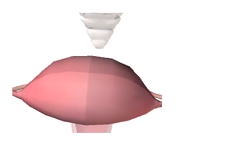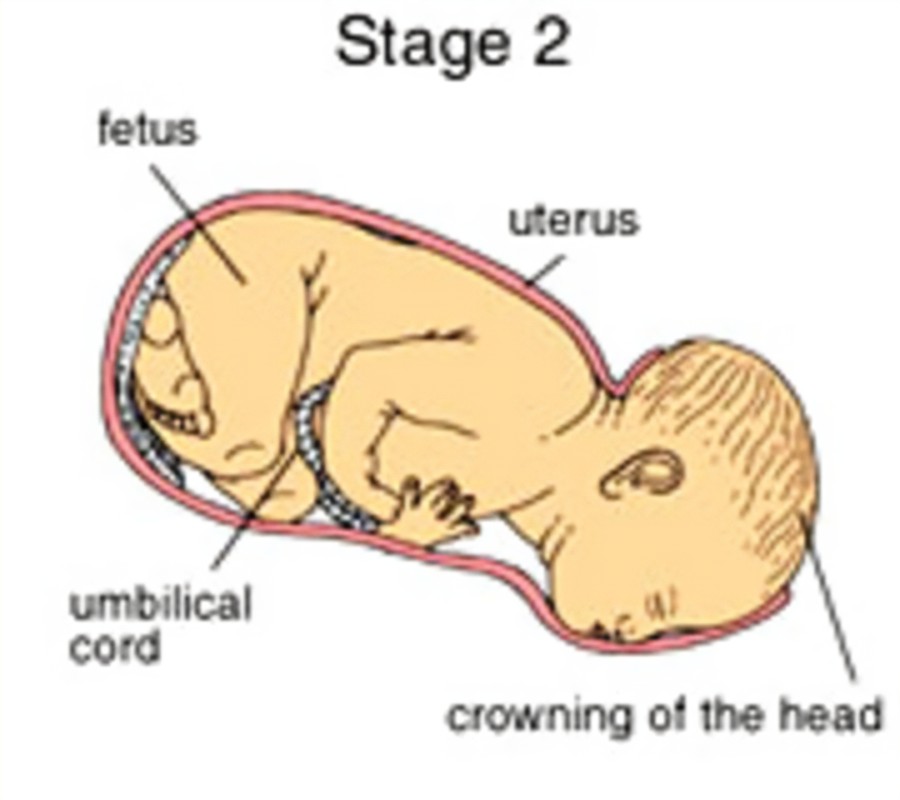exam 6
1/36
There's no tags or description
Looks like no tags are added yet.
Name | Mastery | Learn | Test | Matching | Spaced |
|---|
No study sessions yet.
37 Terms
All the following are functions of the ovaries EXCEPT
B. Maintaining the development of a fetus
Which of the following statements is true concerning oogenesis?
B. The primary oocyte divides to produce a secondary oocyte.
The ovarian follicle becomes the ____________ after ovulation.
Corpus luteum
Ovulation occurs when an egg is released from the ______________ .
ovarian follicle
This layer of the uterus is shed monthly.
Endometrium

Name the specific region of the reproductive system highlighted in blue
below (also indicated by the arrow).
Cervix

Name the specific region of the reproductive system highlighted in blue below (also indicated by the arrow)
Fimbriae (infundibulum)
This layer of the uterus contracts during labor
D. Myometrium
Which of the following statements is false concerning the vagina?
A. The fundus is made of elastic fibers, blood vessels, lymph vessels and nerves.
Which of the following statements is false concerning the functions of the vagina?
it secretes progesterone to maintain pregnancy.
Describe the purpose of the cervix prior to ovulation.
Just prior to ovulation, the cervix swells, softens and secretes mucus allowing sperm better access to and viability within the uterus.
Describe the purpose of the cervix during pregnancy.
When a female becomes pregnant a mucus plug develops in the cervix and prevents any bacteria or pathogens from entering the uterus, thus protecting the health of the developing fetus. A firm, closed cervix also holds the developing fetus in the uterus until it reaches full term.
Label the regions of the reproductive system below: (A C)
A: Prepuce B: Urethral orifice C: Vestibule
True or False: Each mammary gland contains 12- 24 lobules
true
true or False: The mammary alveoli begin at the nipple and divides into numerous other lobules.
false
True or False: Milk is not produced during pregnancy because of the production of estrogen and progesterone.
true
True or False: Colostrum has a similar composition to milk but contains a lower concentration of protein.
False
Blood tests indicate that estrogen and LH levels are both elevated. Your patient is most likely in what phase of the female uterine cycle?
Proliferative phase
Blood tests indicate that progesterone and estrogen levels are both increased. Your patient is most likely in what phase of the female uterine cycle?
C. Secretory phase
Which of the following is false concerning the organs of the male reproductive system?
C. One produced, sperm travel to the seminal vesicles for maturation.
The ____________connects the seminal vesicle with the urethra to allow sperm to exit the body
Ejaculatory duct
The _____________ join with the vas deferens to form an ejaculatory duct.
Seminal vesicles
Match the gland/organ with the best description(s) A-F.
Select all that apply.
1. Seminal Vesicles
2. Prostate Gland
3. Bulbourethral glands
4. Testes
5. Anterior Pituitary
A. First to secrete during ejaculation
B. Produces FSH
C. Produces sperm
D. Secretes fructose
E. Secretes alkaline fluid
F. Produces prostaglandins
G. Secretes acidic fluid
Seminal Vesicles: D, F --fructose, prostaglandins
Prostate Gland: E --alkaline fluid
Bulbourethral glands: A, E --alkaline fluid, first secretion
Testes: C --produces sperm
Anterior Pituitary: B - -FSH
Which of the following is true concerning spermatogenesis?
D. Each primary spermatocyte produces four viable gametes
Which of the following is false concerning spermatogenesis?
Males have all the sperm at birth that will be made during the lifetime.

Label the regions of reproductive system below: (A E). To receive full credit you must name specific regions.
A: Vas Deferens B: Seminal Vesicles C: Ejaculatory Duct D: Prostate gland E: Bulbourethral gland

Name and discuss the purpose of the region of sperm indicated by the arrow in the figure below
the midpiece contains numerous mitochondria that generate the locomotive energy needed by the sperm. Tremendous amounts of energy are needed to swim all the way through the female reproductive tract to contact an ovum

Label the regions of reproductive system below: (A-E) To receive full credit you must name specific regions. A: ____________ B: ____________ C: ____________ D: ____________ E: ____________
A: Corpus cavernosum B: Glands penis C: Corpus spongiosum D: Testis E: Epididymis

Name and discuss the purpose of the region of sperm indicated by the arrow in the figure below
the head is almost entirely nucleus containing the cell DNA with a crown called the acrosome which contains enzymes that breakdown the membrane of the egg to allow the sperm to penetrate.
Which of the following is true concerning human cells?
C. Gamete cells are haploid cells.
Discuss in detail the layers of cells (of the blastocyst) which form the embryo
● Ectoderm- The skin and nervous tissue develop from the outer ectoderm layer.
● Endoderm- The inner endoderm layer forms the glands (thyroid, parathyroid and thymus), solid organs (liver and pancreas) and the lining of the hollow organs of the digestive and respiratory systems.
● Mesoderm- All other tissues, including the cardiovascular system, red blood cells, and muscle develop from the middle mesoderm layer
Discuss the developmental steps of how a fertilized egg becomes implanted in the uterus. Include specific locations, names, and amounts of time in your answer.
Zygote→ morula→ blastocyst The zygote (fertilized egg) begins frequent mitotic cell divisions as it travels in the oviducts. The zygote spends about three to four days undergoing mitosis in the oviducts forming the morula and another three to four days undergoing mitosis while unattached in the uterus, forming the blastocyst as the endometrium prepares for implantation. Because of progesterone release from the corpus luteum, the endometrium increases its blood supply and secretes glycogen. The blastocyst implants into the endometrium of the uterus around day 7.
Discuss the supportive cells of the blastocyst and their purpose during pregnancy.
The amnion, placenta and umbilical cord.) The amnion forms a sac filled with fluid to cushion and protect the fetus. The placenta is a temporary organ that carries out nutritive, respiratory, excretory and endocrine functions for the embryo. The baby continues to grow in the uterus with nutrition provided by the placenta for nine months until it is time for delivery. The umbilical cord attaches the embryo to the placenta.
Label each of the following as occurring during the: 1st trimester, 2nd trimester or 3rd trimester
1. Lungs fully mature: 3rd trimester
2. Lanugo develops: 2nd trimester
3. First fetal movements felt: 2nd trimester
4. Neurulation: 1st trimester
5. Testes descend to scrotum: 3rd trimester
Find the steps that correctly order neurulation:
C. Ectoderm→ convergence→ neural fold → neural tube → spinal cord

Name and discuss the stage of labor that best describes the figure below
The first stage, dilation of the cervix, is the time it takes for the mother’s cervix to dilate to ten centimeters. During this stage the uterus contracts, which pushes the baby’s head against the cervix causing it to dilate (widen). This stage of labor is the longest, lasting, on average 6-10 hours. Oxytocin is a hormone that is released from the posterior pituitary gland to stimulate contractions in the myometrium of the uterus. As contractions continue, oxytocin is increasingly released until the baby is born.

Name and discuss the stage of labor that best describes the figure below:
The second stage, delivery of the baby, is the time it takes for the baby to be pushed out of the birth canal a er full dilation has been accomplished. During this stage a woman uses her abdominal muscles to push the baby, with the help of the uterus contracting, through the cervix and out the vagina. This stage is much shorter, las ng, on average, 50 minutes in a first delivery and 20 minutes in later ones. A er the child is born the umbilical cord is ed and cut.